The New Motorola Moto X (2nd Gen) Review
by Joshua Ho on September 17, 2014 9:00 AM EST- Posted in
- Smartphones
- Motorola
- Android
- Mobile
CPU and General Performance
By now, the choice of SoC has become a major focus in every smartphone. While it may not be clear how to use more compute with every generation, it’s generally accepted that stronger CPU and GPU performance is better, especially if it means that there is a power advantage in race to sleep tasks. In the case of the new Moto X we see a Snapdragon 801 SoC with CPU clocked at 2.5 GHz and a GPU clocked at 578 MHz. At this point, there's really not too much to talk about in this SoC as we've reviewed multiple devices with the same exact part.
Currently, our test suite relies upon a combination of browser and gaming benchmarks to get a good idea of total performance. However, it’s important to note that the Android results are only comparable to other Android phones as the stock browser will have specific optimizations that aren’t found in Chrome. We’ll start with the browser benchmarks first.

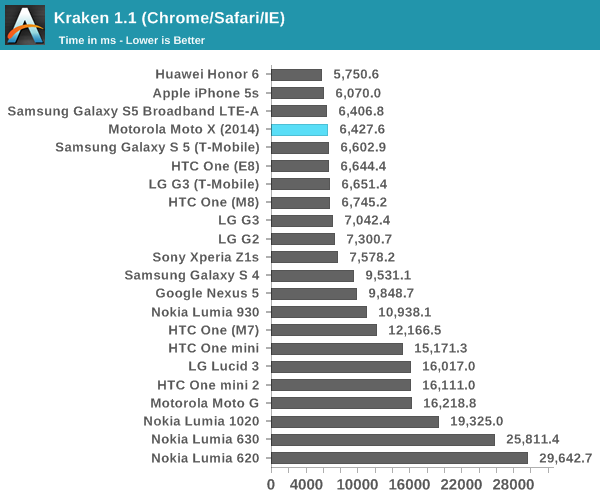
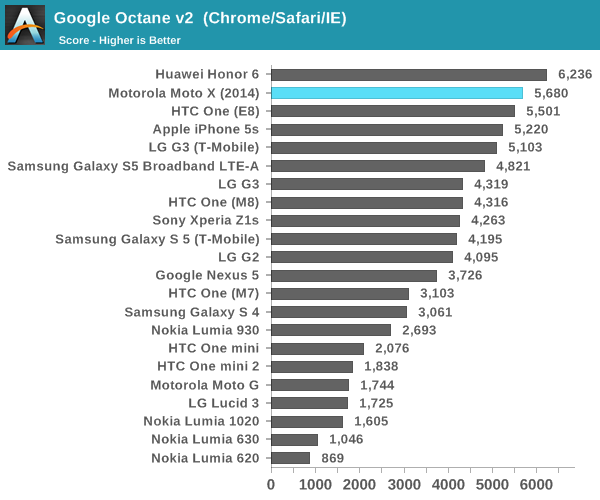
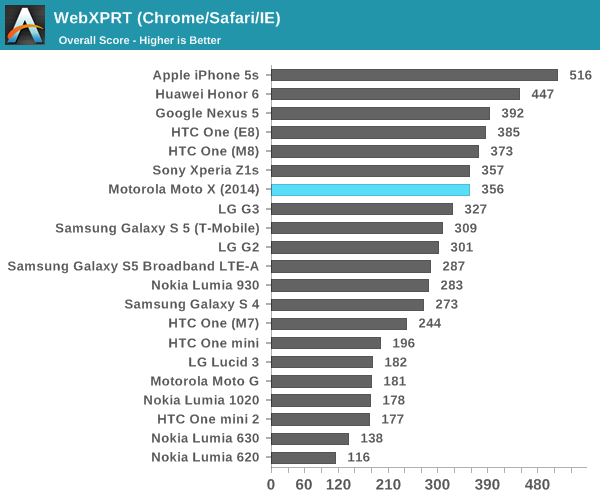
In the browser benchmarks, we see that the new Moto X falls right where we expect it to for the Snapdragon 801. It's plenty fast, and I don't expect any differences in CPU performance between Snapdragon 801 and 805 devices. This is unlikely to be a point of differentiation until Snapdragon 810 and beyond come into play. We'll take a look at Basemark OS II next, which is a general system performance benchmark.
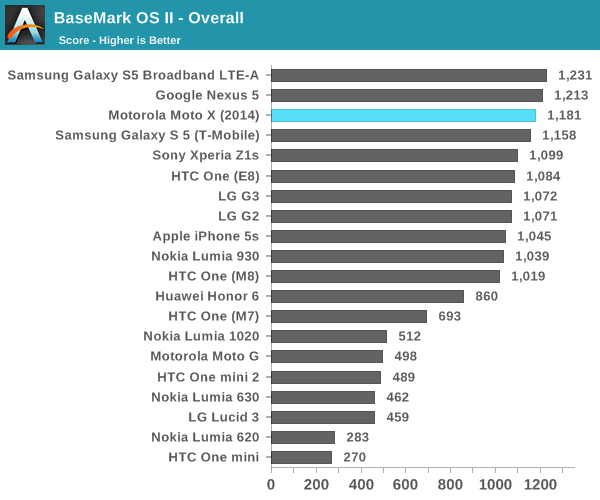
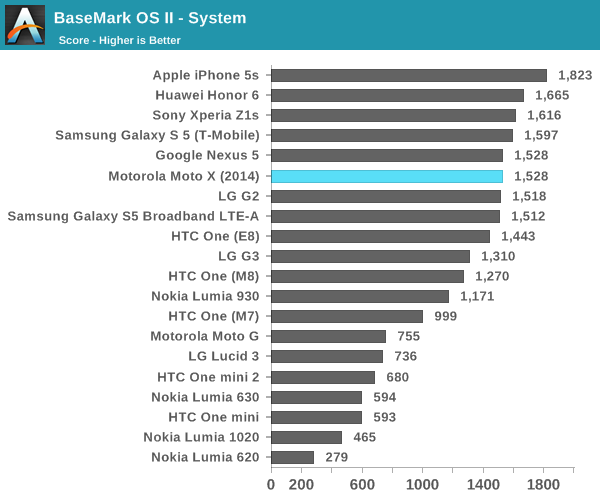
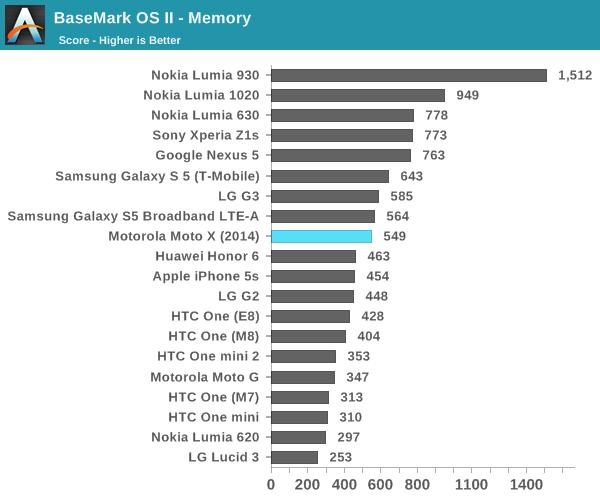
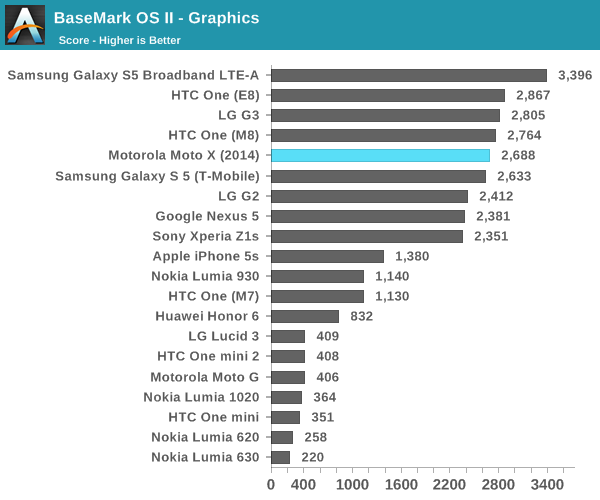
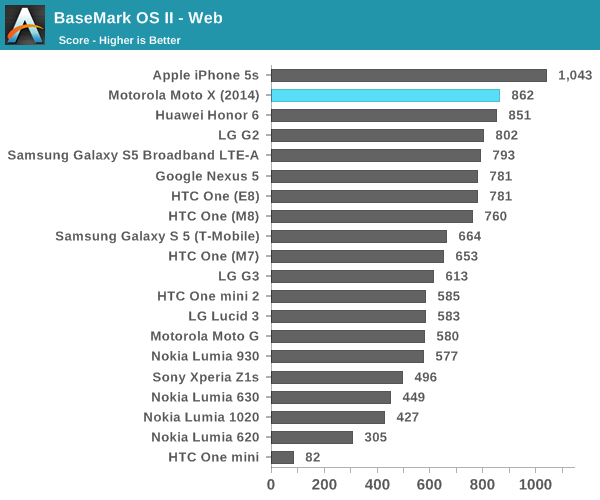
Here, we once again see that there's not much different in terms of performance. We'll turn to the gaming benchmarks next to get a good idea of what to expect from the GPU.










179 Comments
View All Comments
BGQ-qbf-tqf-n6n - Wednesday, September 17, 2014 - link
There have been multiple articles on the tech press regarding Brian Klug also being hired by Apple. Recent "wish I could comment" tweets post-iPhone release seem to support this.melgross - Thursday, September 18, 2014 - link
No, he went to apple about a year ago.Impulses - Wednesday, September 17, 2014 - link
I still his Twitter account is still active, his hobby site hasn't seen many updates but it never did. I miss his insights, always found it very on point, but Joshua is doing a good job...Tho I'm now wondering what his preferred Android UI is (Sense?), since he made a comment along the lines of "AOSP isn't my preferred Android UI" in this article.
soccerballtux - Thursday, September 18, 2014 - link
+1 he really left us hanging. what does he like? what should I?Impulses - Monday, September 22, 2014 - link
I actually meant I'm wondering what Joshua's logged l preferred UI is, since he made that comment I alluded to in this review. I think Brian had a preference for cleaner Nexus/Moto devices, tho Sense's value seems to ebb and flow in between Sense/AOSP releases.svan1971 - Wednesday, September 17, 2014 - link
"While the actual ROM itself seems to have some stability issues such as reboots, app crashes, and other oddness, the functionality is fantastic." its the need to make comments like this that caused me to switch to apple after 4 years of being apart of the droid collective...I will not be assimilated !fokka - Wednesday, September 17, 2014 - link
i'm actually surprised that this statement is not elaborated on some more. you should be able to expect a new flagship phone to work without random reboots and "other oddness" in 2014, even on android.hansmuff - Wednesday, September 17, 2014 - link
So I also wish there was more elaboration on this.Is it typical for the ROMs to get updated as they fix bugs? If so, that would mean older phone revisions would need patches to replace ROM code, taking up RAM.
How is this handled in the smartphone world?
Zoomer - Monday, September 22, 2014 - link
ROM is kind of a misnomer nowadays since it's actually stored in flash. Though one could argue that it's software enforced ROM since most phones with locked bootloaders / no root desn't allow writes to system.JoshHo - Wednesday, September 17, 2014 - link
I'm reluctant to make any final judgments on the stability of software as I was told to expect a launch day OTA.